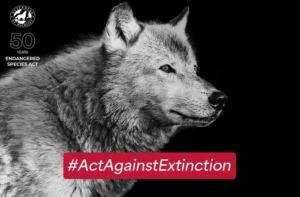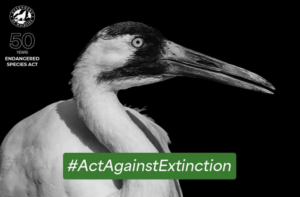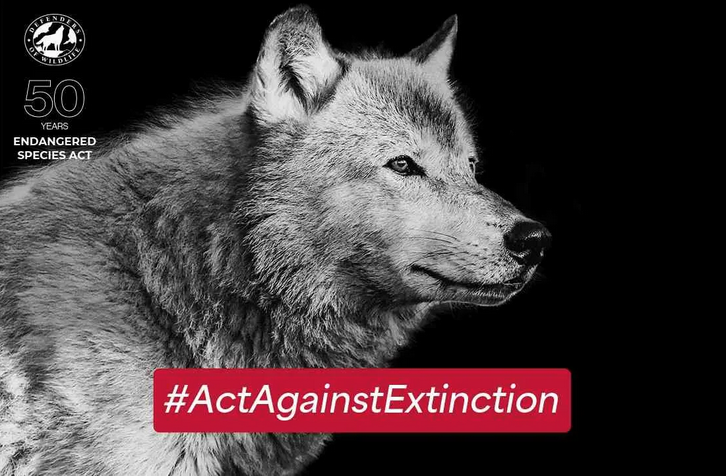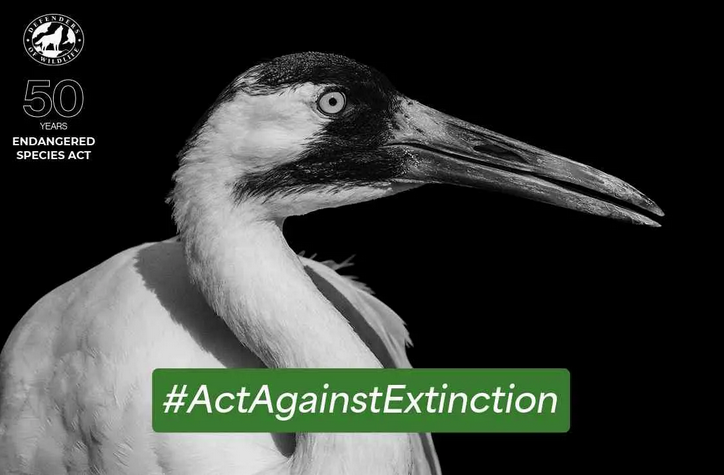By Tim Preso, Managing Attorney, Earthjustice
We must not only protect and restore the Endangered Species Act, but ensure strong implementation for its next 50 years.
This year, the Endangered Species Act (ESA) turns 50. Recognizing that extinction is irreversible, the United States in 1973 did what no country had done before, establishing a fundamental right to exist for the animal and plant species with which we share our planet. Enacted in the midst of a worldwide extinction crisis that threatened even our national symbol, the bald eagle, the ESA reflected the resolve of a society determined to guarantee a future not only for itself, but also for the rest of creation, even when that required difficult choices.
Today, more than 90 percent of the American public supports the ESA, widely regarded as one of the most important conservation laws in history. The experience of four decades has demonstrated the importance of the ESA’s legal safety net. Because of the Act, today’s children are able to experience not only bald eagles but also orcas, alligators, condors, grizzly bears, and myriad others as living, breathing creatures — not dusty museum specimens.
And we need the ESA now more than ever as our extinction and climate crises worsen. According to a report released by NatureServe this year, over one-third of biodiversity in the U.S. is at risk of disappearing. The report found that 34% of plants and 40% of animals are at risk of extinction, while 41% of ecosystems are at risk of range-wide collapse. Globally, one million species face the threat of extinction in the coming decades. Habitat loss is the number one driver of this biodiversity crisis, and climate change has only compounded the problem.
Yet in its 50th year, this incredibly successful and popular piece of bedrock environmental legislation is under fire from political detractors. A Republican-led effort in the House of Representatives is attempting to weaken the Act by exempting, or picking off, individual species from legal protection. Representative Lauren Boebert recently introduced a bill to delist gray wolves nationwide. Representatives Hageman and Rosendale have introduced bills to delist grizzly bears in the Greater Yellowstone and Northern Continental Divide ecosystems, respectively. And several bills seek to utilize the extreme and blunt instrument of disapproval under the Congressional Review Act to repeal administrative rulemakings under the ESA, including protections for the lesser prairie chicken and long-eared bat and the legal definition of what counts as a species’ critical habitat.
The intensity of this onslaught of hostile legislative proposals reveals something important about the ESA: it works. If it lacked the teeth needed to reliably bolster survival for endangered plants and animals, politicians championing harmful development projects wouldn’t target it. In fact, 99 percent of the species protected under the ESA have been saved from extinction.
And selfishly, it works for humans too. The same natural systems that make life possible for other creatures also make life possible for people. Natural systems filter pollutants to provide clean air and water, protect soil quality, and provide pollination and pest control for agriculture. The diversity of species produced by these systems provide us with food and medicine. Natural processes help to mitigate climate change, as more than half of all human-caused carbon dioxide emissions are absorbed by natural systems that include, among others, old-growth and mature forests. And a diverse and flourishing natural world enriches all of our lives.
Many of the ESA’s implementing regulations were weakened by the Trump administration; these protections should be promptly restored. And going forward, our political leaders should look for new opportunities to ensure that the ESA can be as effective as possible not only in preventing extinctions, but also in restoring and recovering imperiled species.
In the law’s 50th anniversary year, it is time for us to not only protect and restore the Endangered Species Act, but to ensure strong implementation for its next 50 years. Our ability to protect the web of life on our planet – and ultimately ourselves – depends on it.




